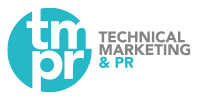Building towards safer site procedures during the pandemic
As specialists in construction and manufacturing, many of our clients have been affected by the COVID-19 outbreak – either by closures, interruption of work or even just widespread confusion. In a letter to the construction industry, the UK’s Secretary of State for Business, Energy and Industrial Strategy has now confirmed that the sector is essential and should continue to operate under specific safety guidance.
In accordance with the Chief Medical Officer’s advice, the Construction Leadership Council has published a set of guidelines to help site managers continue in the safest way possible.
The Council’s advice can be broken down into three key points:
- Enforce social distancing on-site
First and foremost, all non-essential site visits should be stopped with immediate effect. When on site, all workers should maintain two-metre distances at all times, physical contact should be avoided and any activities requiring skin to skin contact must be halted.
To aid this, site managers can stagger the start and finish times of their team members, reducing on-site congestion and contact throughout the day. Social distancing should be observed not only while working, but also in the canteen, toilets and anywhere else that individuals could congregate.
- Improve hygiene facilities
Site managers should look into installing additional hand-washing facilities on-site, and making hand sanitiser available where this isn’t possible. Regular hand washing should be encouraged throughout the day, especially following direct contact or use of shared tools.
Similarly, tools and equipment should be cleaned and sterilised between uses – doing so can significantly decrease the risk of the virus spreading.
- Ensure safe waste disposal
Site managers should be vigilant in ensuring that waste is disposed of regularly and safely. This includes general waste, but also single-use PPE and other disposable equipment. Cleanliness standards should be increased, and closely regulated.
In the construction sector, as in wider society, safety must come first in the current climate – but it’s important to keep the industry moving. By following the guidance provided, site managers can enable construction to continue in the safest way possible and protect both employees and ongoing projects.
For more advice on ensuring safe operating procedures during the COVID-19 outbreak, use the following links to access relevant resources:
- The Secretary of State’s letter to the construction industry: https://assets.publishing.service.gov.uk/government/uploads/system/uploads/attachment_data/file/877074/secretary-of-state-letter-construction-industry.pdf
- The Construction Leadership Council’s site operating procedures: http://www.constructionleadershipcouncil.co.uk/wp-content/uploads/2020/04/Site-Operating-Procedures-23-March-2020-v1.pdf
